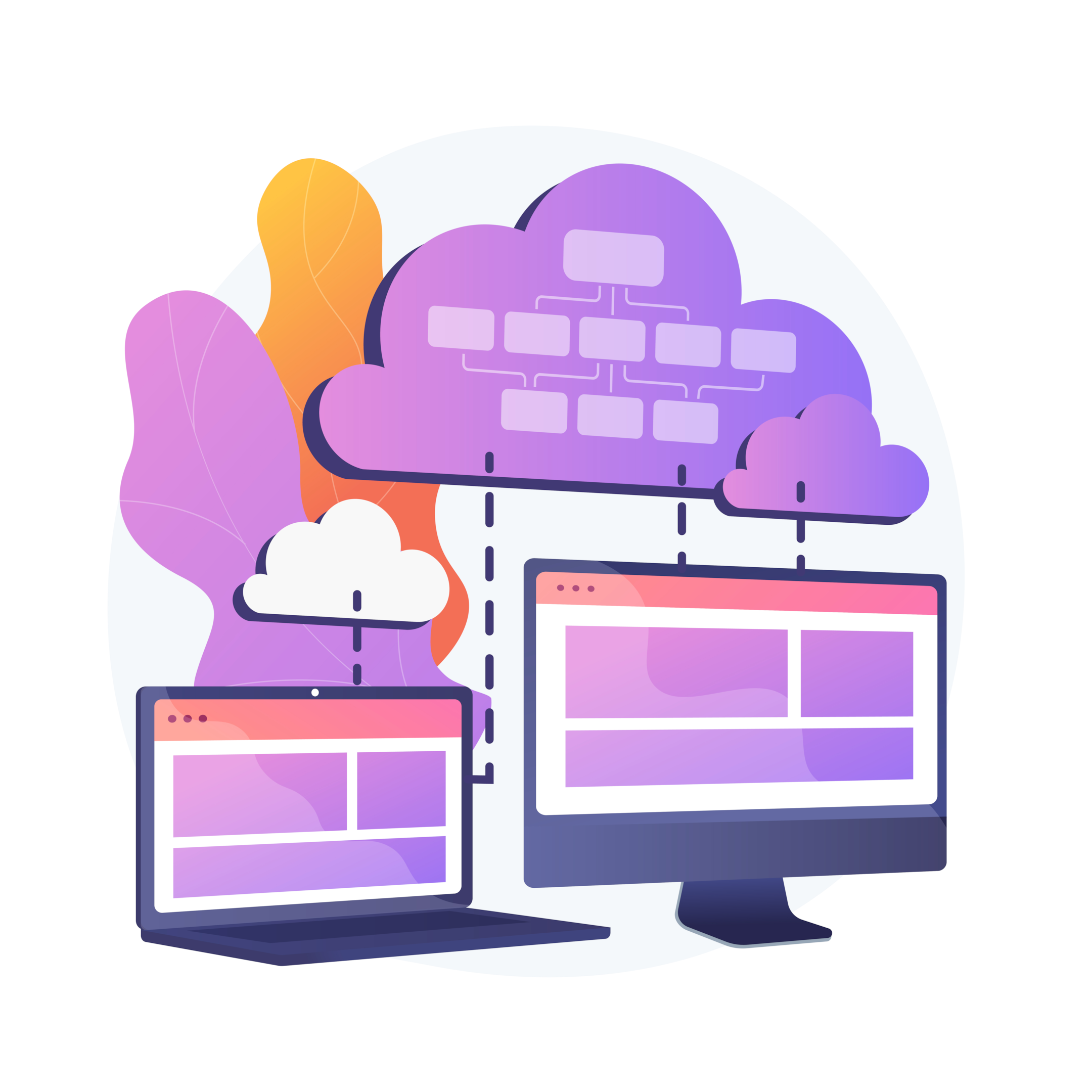Cloud computing offers immense power, but managing its costs effectively remains a hurdle. Enter Cloud FinOps, a collaborative approach that goes beyond just managing cloud finances. It fosters a cultural shift, uniting technical teams, finance, and business stakeholders to optimize cloud spending.

This blog post dives into Cloud FinOps, exploring its benefits, core principles, and strategies for effective cloud financial management. You’ll learn how to:
- Gain full visibility into your cloud costs.
- Eliminate wasteful spending and maximize cloud value.
- Allocate resources efficiently for cost-effectiveness.
- Foster collaboration for informed cloud decisions.
Whether you’re a cloud expert or just starting out, Cloud FinOps is crucial for maximizing your return on cloud investment. Let’s explore it together!
Demystifying Cloud Financial Management
 In today’s cloud-driven world, effectively managing cloud finances is crucial for businesses of all sizes. Here’s where collaborative cloud operational cost management comes in. It’s a cultural shift that goes beyond just managing cloud costs. It empowers organizations to optimize their cloud spending and maximize the return on their cloud investment.
In today’s cloud-driven world, effectively managing cloud finances is crucial for businesses of all sizes. Here’s where collaborative cloud operational cost management comes in. It’s a cultural shift that goes beyond just managing cloud costs. It empowers organizations to optimize their cloud spending and maximize the return on their cloud investment.
What is Cloud FinOps?
Cloud FinOps fosters a collaborative environment where technical teams, finance professionals, and business stakeholders work together to achieve shared financial goals. It accomplishes this by focusing on several key objectives discussed below.
Align Cloud Spending with Business Goals
Collaborative cloud finance ensures that cloud investments directly support and align with the organization’s overall business objectives. This fosters a shift away from siloed decision-making and towards a unified approach to cloud resource utilization.
Enhance Financial Visibility and Control
By leveraging Cloud FinOps practices, organizations gain greater transparency into their cloud spending (financial management). This includes comprehensive insights into costs associated with various cloud services, resources, and deployments. With this improved visibility, organizations can make informed decisions about cloud resource allocation and spending.
Optimize Cloud Resource Utilization
Collaborative cloud finance helps organizations optimize how they use their cloud resources. This translates to identifying and eliminating wasteful spending, minimizing underutilized resources, and ultimately reducing overall cloud spend.
Promote Cross-Functional Collaboration
Collaborative cloud finance fosters communication and collaboration between different teams within the organization. This ensures everyone is aligned on cloud resource usage and financial goals. Technical teams understand the financial implications of their decisions, while finance experts gain a deeper understanding of cloud resource needs.
Benefits of Cloud FinOps practice
 By adopting Cloud FinOps practices, organizations can reap significant cloud financial management benefits, including:
By adopting Cloud FinOps practices, organizations can reap significant cloud financial management benefits, including:
Cost Savings: Eliminate Wasteful Spending and Improve Efficiency
Collaborative cloud cost management helps identify and eliminate unnecessary cloud costs, leading to significant savings. These savings free up valuable resources that can be reinvested in other strategic initiatives. By optimizing cloud resource utilization, organizations can get the most value out of their cloud computing investments.
Increased Agility: Data-Driven Decisions for Faster Resource Management
Collaborative cloud finance provides data-driven insights for faster and more informed decisions about cloud resources. This allows organizations to adapt to changing business needs and scale their cloud deployments efficiently.
Improved Resource Utilization: Optimize Allocation and Prevent Waste
Collaborative cloud cost finance helps optimize resource allocation, preventing underutilized resources that contribute to unnecessary cloud spendings. This ensures organizations get the most value out of their cloud investment.
Enhanced Innovation: Free Up Resources to Drive Innovation
By optimizing cloud spending through collaborative cloud finance, resources are freed up for innovation and other strategic initiatives. This allows organizations to focus on developing new products and services, accelerating their digital transformation journey.
Greater Transparency and Accountability: Shared Responsibility for Optimized Spending
Collaborative cloud finance fosters a culture of shared financial responsibility for cloud spendings across different departments within the organization. This fosters accountability and ensures everyone is working towards the same goal of optimizing cloud resources.
Understanding Cloud Spend and Cloud Cost Management
 Cloud Spend: The Foundation
Cloud Spend: The Foundation
Before diving into cost management strategies, it’s crucial to understand the foundation: cloud spend. Simply put, cloud spend refers to the total cost incurred by your organization for using cloud services. This encompasses all charges associated with your virtual resources, including compute, storage, network, and software licenses.
Tracking cloud spend is essential for two key reasons:
- Budget Control: Having clear visibility into cloud financial management empowers informed budgeting decisions. You can allocate resources effectively across different departments and projects, ensuring you stay within budget.
- Identifying Inefficiencies: By analyzing cloud spend patterns, you can identify areas of potential overspending or underutilized resources. This allows you to optimize resource utilization and reduce waste, ultimately improving your cloud financial management efficiency.
Optimizing Cloud Costs
Collaborative cloud finance goes beyond simply tracking your cloud spendings. It’s the active process of optimizing cloud usage to reduce unnecessary spending. Here are some key strategies to unlock the power of operational cost management:
- Right-sizing Resources: This involves allocating the appropriate amount of virtual resources to meet workload demands. Imagine paying for a giant server when a smaller one would suffice! Right-sizing helps to minimize unnecessary costs by avoiding overprovisioning.
- Leveraging Reserved Instances: Reserved instances offer significant cost savings for predictable workloads. By committing to a specific usage level upfront, organizations can obtain significant discounts compared to on-demand pricing. Think of it like a bulk discount for virtual resources you know you’ll consistently use.
- Automating tasks like scaling resources and identifying unused resources streamlines operational cost management. Imagine your cloud automatically adjusting its size based on usage, freeing you up to focus on other priorities. Automation also enables continuous cost forecasting. By analyzing historical usage patterns and planned activities, automated systems can generate cost forecasts. This allows for proactive budgeting and resource allocation, preventing unexpected cost spikes.In addition to the benefits already mentioned, automation ensures continuous optimization and reduces the risk of human error.
The Crucial Distinction: Tracking vs. Managing
 While to track cloud spend is a crucial first step, it’s only the foundation. Actively managing cloud costs takes your cloud financial management to the next level.
While to track cloud spend is a crucial first step, it’s only the foundation. Actively managing cloud costs takes your cloud financial management to the next level.
Here’s the key difference:
- Tracking cloud spend is simply monitoring the total cost incurred for cloud usage. It’s a passive approach that provides a historical view of your spending.
- Collaborative cloud finance is an active process that analyzes your cloud spend data to identify cost optimization opportunities. It involves taking concrete steps to reduce unnecessary costs and ensure your on-demand resources are used efficiently.
Challenges of Managing Cloud Costs in a Dynamic Environment:
The dynamic nature of cloud environments presents unique challenges for cost management:
- Rapidly Scaling Services: Cloud services often offer auto-scaling features that automatically adjust resources based on workload demands. This flexibility can be beneficial, but it can also lead to unexpected cost fluctuations if not monitored closely.
- Visibility and Transparency: Managing cloud costs effectively requires clear visibility into cloud resource usage and cost allocation across different departments within the organization. Without this transparency, it’s difficult to identify areas for optimization and hold teams accountable for their cloud financial operations.
Key Cloud FinOps Concepts
Collaborative cloud finance goes beyond just managing cloud costs. It’s a comprehensive approach that encompasses several key concepts:
- Cloud Financial Management (CFM): This refers to the discipline of managing an organization’s cloud finances to optimize costs, improve resource utilization, and ensure financial accountability. It integrates financial management principles with CFM practices.
- Cloud Cost Management : This focuses on actively optimizing cloud resource utilization to reduce unnecessary cloud costs. It involves strategies like right-sizing resources, leveraging reserved instances, and automating cloud cost optimization tasks.
- Financial Transparency: This is essential for effective cloud finance management. It involves providing clear visibility into both cloud expenses and resource usage across different departments within the organization. Financial operations transparency fosters accountability and empowers informed decision-making.
- Cost Optimization: This is the continuous process of identifying and implementing strategies to reduce cloud spending. It’s an ongoing effort that requires constant monitoring and analysis of cloud costs and resource usage.
- The FinOps Foundation: This non-profit organization promotes the adoption of best practices for cloud financial management through education, collaboration, and certification. They provide resources and frameworks to help organizations implement collaborative collaborative cloud finance successfully.
Getting Started with Cloud FinOps

Equipping yourself with the knowledge and best practices of collaborative collaborative cloud finance is crucial for optimizing your organization’s cloud financial management. Here are some initial steps to get you started:
- Explore the FinOps Foundation website: The FinOps Foundation is a non-profit organization dedicated to promoting the adoption of Cloud FinOps practices. Their website is a valuable resource, providing a wealth of information, including educational content, best practice frameworks, and case studies.
- Download the FinOps Foundation whitepaper: The FinOps Foundation offers various whitepapers that delve deeper into specific aspects of collaborative cloud finance. Downloading a relevant whitepaper can provide a comprehensive understanding of the core principles and implementation strategies.
- Consider a Cloud FinOps certification: Earning a Cloud FinOps certification validates your knowledge and expertise in cloud financial management. Several certification options are available, catering to different experience levels.
- Engage Cloud FinOps Service Providers: Cloud FinOps service providers like A-Dev can offer valuable guidance and support throughout your collaborative cloud finance journey. These companies can help you develop a customized Cloud FinOps strategy, implement best practices, and optimize your cloud financial management.
Remember, collaborative cloud financial management is an ongoing process. By continuously monitoring your cloud spendings, implementing best practices, and collaborating with experts, you can ensure your organization maximizes the value of its cloud investment.
Conclusion
Cloud FinOps: A Powerful Approach to Cloud Cost Optimization
Cloud financial management empowers organizations to move beyond simply managing cloud spendings. It fosters a collaborative culture that optimizes cloud resource utilization, reduces unnecessary spending, and maximizes the return on your cloud investment.
Here are some key takeaways:
- Cloud financial management promotes collaboration between technical teams, finance experts, and business stakeholders.
- It emphasizes financial transparency and continuous cost optimization strategies.
- By adopting Cloud FinOps practices, organizations can achieve significant cost savings, improved resource allocation, and greater agility in the cloud.
Explore Further and Get Started
This blog post has provided a foundational understanding of cloud financial management. There’s a wealth of resources available to help you delve deeper. We encourage you to:
- Explore the FinOps Foundation website for educational content, best practices, and certifications.
- Consider engaging a cloud financial management service provider like A-Dev to develop a customized strategy and optimize your cloud financial management.
Cloud FinOps is a powerful tool for maximizing the value of your cloud investment. A-Dev can also assist with the initial cloud migration process, ensuring a smooth transition to the cloud and setting the stage for successful Cloud FinOps implementation.Take control of your cloud spend and unlock the full potential of the cloud.





